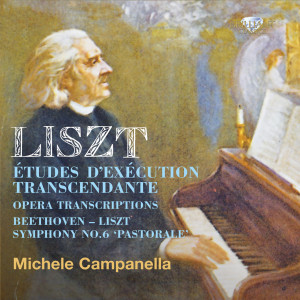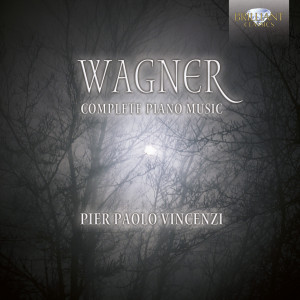Richard Wagner
Story
Richard Wagner was a German composer best known for his operas, primarily the monumental four-opera cycle “Der Ring des Nibelungen”. He was born Wilhelm Richard Wagner on May 22, 1813, in Leipzig, Germany. He was the ninth child in the family of Carl Wagner, a police clerk. Richard was only six months old when his father died, and he was brought up by his mother Johanna and stepfather Ludwig Geyer, an actor and playwright. Young Wagner studied piano from the age of 7 and soon developed ability to play by ear and improvise. At age 15 he wrote piano transcriptions of Ludwig van Beethoven’s “9th Symphony” and orchestral overtures. He studied at the University of Leipzig, and also took composition and conducting lessons with the cantor of St. Thomas in Leipzig.
Wagner’s early operas did not meet with success, leaving him in serious financial difficulties. From 1836-1839 he was a music director in Riga Opera, where his wife, Minna Planer, was a singer, and her extramarital escapades were the talk of the town. The Wagners amassed such significant debts that they had to escape from creditors and fled Riga. They spent 1840 and 1841 in London and Paris, where Richard worked as an arranger for other composers.
Giacomo Meyerbeer promoted Wagner’s third opera, “Rienzi”, to performance by the Dresden Court Theatre, where the opera was staged to considerable acclaim. In 1842 the Wagners moved to Dresden and lived there for six years. Eventually Richard was appointed the Royal Saxon Court Conductor. At that time he completed and staged “Der fliegende Hollander” (aka “The Flying Dutchman”) and “Tannhauser”.
Wagner was exposed to many conflicting political influences, ranging from Marxism and liberalism on the left to German nationalism on the right to the anarchism of Mikhail Bakunin. After the revolution of 1848-49, Wagner fled from Germany to Paris, then to Zurich, and found himself penniless, unemployed and depressed (he had also suffered from a severe skin infection for many years). At that time Wagner was unable to compose or perform music, and he expressed himself in writing essays: “The Art-Work of the Future”, describing “Gesamtkunstwerk,” or “total artwork” uniting opera, ballet, visual arts and stagecraft.
Wagner’s four “Ring” operas gradually evolved, and he completed the libretto by 1852. Another year of suffering went by, until he began composing “Das Rheingold” (aka “The Rhine Gold”) in November 1853, following it with “Die Walkure” (aka “The Valkyrie”) in 1854. In 1856 he began work on “Siegfried”, but put the unfinished opera aside and focused on his new idea: “Tristan und Isolde” (aka “Tristan and Isolde”), which was composed between 1857 and 1859. In 1861 Germany ended the political ban on Wagner, and in 1862 he ended his troubled marriage to Minna.
“Tristan and Isolde” was initially accepted for production in Vienna. The opera had over 70 rehearsals between 1861 and 1864, but remained unperformed and gained a reputation for being unplayable. The young Bavarian King Ludwig II, an admirer of Wagner’s operas since his childhood, had settled the composer’s debts and financed his opera productions. Finally “Tristan and Isolde” was produced in Munich, and premiered under the baton of Hans von Bulow in June 1865. It was the first Wagner premiere in 15 years.
Cosima von Bulow, the wife of the conductor, Hans von Bulow, had an indiscreet affair with Wagner, and their illegitimate daughter, Isolde, was born in 1865. The affair scandalized Munich, and Wagner fell into disfavor among members of the court who were jealous of his friendship with the king. Ludwig was pressured to ask Wagner to leave Munich. However, from 1866 to 1872 the king placed Wagner and his family at Tribshen villa on Lake Luzern, Switzerland. There Richard married Cosime in August 1870. Inspired composer created one of his most beloved works, the “Siegfried Idyll” for 15 players, written as a gift to Cosima, and premiered on Christmas day, 1870.
In 1872 Wagner moved to Bayreuth with a plan that his “Ring” cycle to be performed in a new, specially designed opera house. King Ludwig supported the composer with another large grant in 1874, and the Wagners bought Villa Wahnfried and made permanent home in Bayreuth. In August 1876 the new opera “Festspielhaus” opened with the premiere of “The Ring” and has been the site of the Bayreuth Festival ever since.
Richard Wagner died of a heart attack on February 13, 1883, while wintering in Venice. He was laid to rest in the garden of his Villa Wahnfried in Bayreuth. The Wagner Museum in Lucerne, Switzerland, is now a museum of period musical instruments and art collection of the Wagner family. One room is dedicated to the history of the Wagner Festivals in Lucerne. The Wagner Museum allows visitors to take photos of the documents about the Wagner family’s help to the Jewish musicians and intellectuals who fled the Nazi regime in the 1930s.
Documents reveal that the Wagner family were assisting Jewish musicians and intellectuals who fled the Nazi regime in finding employment in Switzerland and other lands, such as the USA and Palestine. Documents, photographs and letters illustrate the bold activity of Arturo Toscanini with Vladimir Horowitz and the Wagner family members in getting funds from the government of Benito Mussolini and using those funds to accommodate Jewish musicians and intellectuals under the umbrella of the annual Wagner Festival in Lucerne. The Wagner Festival Symphony Orchestra employed many Jewish musicians who later joined the Israel Philarmonic Orchestra (then known as the “Palestine Orchestra”).
(IMDb Mini Biography By: Steve Shelokhonov)
Details
- Composer
- Richard Wagner
- Date of birth
- May 22, 1813
- Nationality
- German
- Albums
- 13
- Tracks
- 76
13 albums
-

George Frideric Handel, Richard Wagner and 15 others
A Royal Christmas for the Queen
-

Richard Wagner, Camille Saint-Saëns and 3 others
Brahms: Paganini Variations & Liszt: Various Piano Works
-

Richard Wagner, Georges Bizet and 7 others
Lemare: Organ Transcriptions
-

Richard Wagner, Giuseppe Verdi and 9 others
Liszt: Studies and Transcriptions
-

Richard Wagner and Giuseppe Verdi
Love & Death
-

Richard Wagner, Giuseppe Verdi and 15 others
Opera Overtures, Choruses and Duets
-

Richard Wagner, Max Bruch and 2 others
Rheingold: Music by Reinecke, Wagner, Bruch & Silcher
-

George Frideric Handel, Richard Wagner and 15 others
Sunday Morning Classics
-

Richard Wagner, Edward Elgar and 36 others
Top 50 Most Popular Classical Violin
-

Richard Wagner, Maurice Ravel and Franz Liszt
Transcriptions for Piano 4-Hands: Ravel, Wagner & Liszt
-

Richard Wagner
Wagner: Complete Piano Music
-

Richard Wagner
Wagner: Lieder
-

Richard Wagner and Salvatore Sciarrino
Wagner: Wesendonck-Lieder, Siegfried Idyll, Träume; Sciarrino: Languire a Palermo
